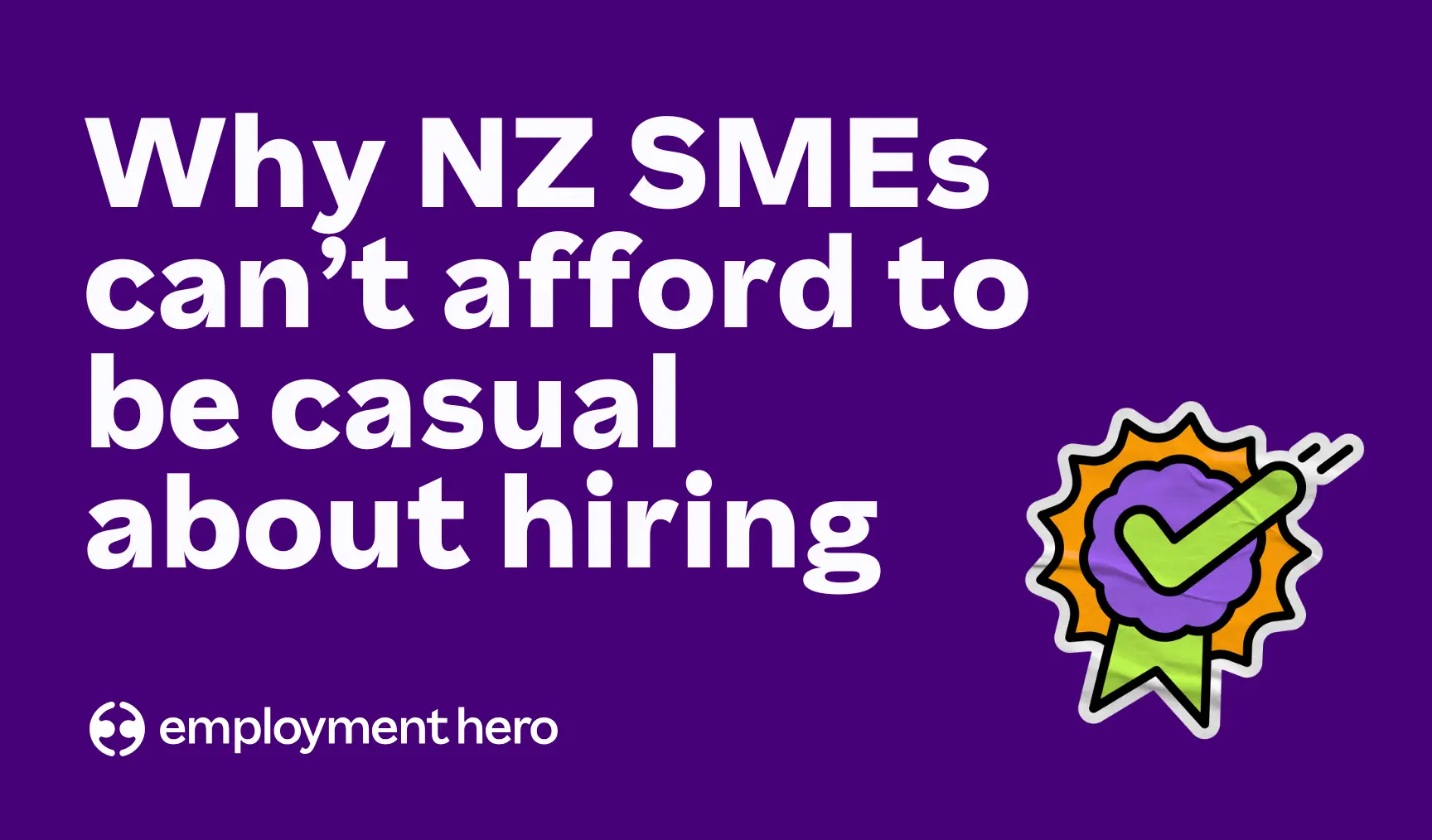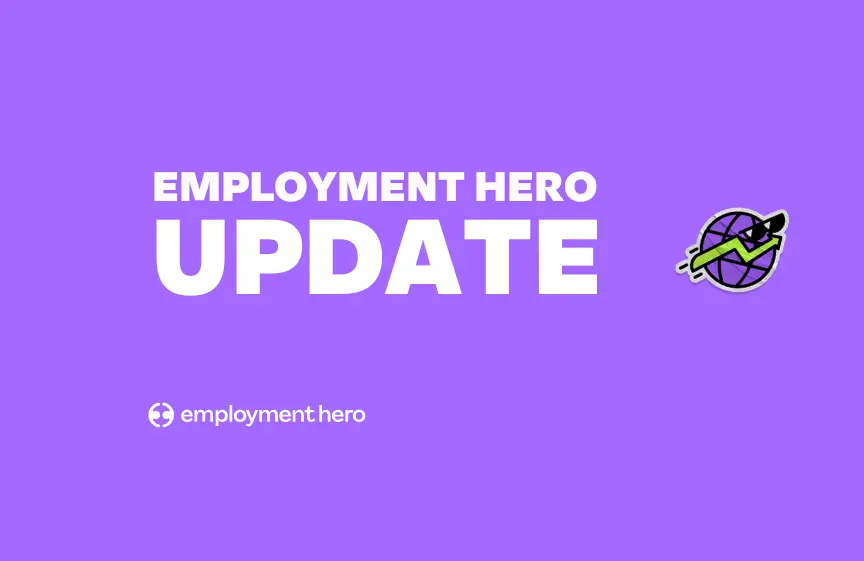Employee Surveys: Worth the Hype?
What are they, should you be using them and are they really worth the hype? The simple answer is yes, yes and yes. Let’s look at why.

Employee surveys. What are they, should you be using them and are they really worth the hype? The simple answer is yes, yes and yes.
Encouraging a culture of feedback is one of the best things you can do for your business – and using employee surveys is one of the easiest ways to achieve this.
We all know how important it is to have strong employee engagement in the workplace. When it comes to keeping your employees engaged, asking for feedback from your team is one of the most effective ways to create a company culture where everyone loves coming to work.
Not only do engaged employees contribute to greater employee performance and business success, but they can also contribute to improved workplace culture, something people managers and business owners are always looking to improve.
Read more: What is company culture?
The common mistakes when providing employee feedback
For many managers, it’s easy to fall into the routine of one-sided feedback. This approach involves employers giving feedback to their employees, normally on the basis of performance appraisals.
While this allows the employees the opportunity for professional development and improve their skills within the workplace, it doesn’t take into consideration how the manager is performing.
With this top of mind, it’s important to emphasise that feedback goes both ways when it comes to the employee/employer relationship.
Feedback is a two-way street
Leaders must give constructive feedback to their team so they can improve their skills or to give recognition for a job well done. Alternatively, employees should have the opportunity to provide feedback based on how they’re feeling about their employee experience. If you’re unsure how to gather honest feedback, here are 12 ways to get reviews on your company.
When you have an open approach to internal communication, you’ll gain greater, actionable insights into how your team is really feeling and can make improvements to the overall employee experience based on the feedback provided.
At the end of the day, you want to provide your employees with job satisfaction, so they feel committed and motivated to go above and beyond in their role.
When you care about employee feedback and actively put strategies in place based on results, you’ll make your employee’s contributions feel valued. And we know that when employees’ feedback and experiences are valued, they’re more engaged. To foster a positive work environment, consider these 11 ways to foster happiness in the workplace.
Employees who feel heard are 4.6x more likely to feel empowered to perform their best work. The result? Happy, engaged and productive employees that will positively impact and grow your business.
Before we dive into the nitty-gritty of employee surveys, let’s go back to basics.
What is an employee survey?
Employee surveys are a set of questions you ask your team. They’re a great way to gain insight into employee engagement and employee experience within your business. Employee surveys are designed to measure your employee’s thoughts, opinions, and feelings within their workplace.
Whether it’s relating to onboarding, offboarding, employee happiness, wellness or employee engagement, there are many ways you can use employee feedback to help better understand your team.
These survey findings can help you build a stronger culture and make improvements to your workplace which can lead to increased productivity, engagement, and happiness whilst reducing employee turnover.
Remember: At the end of the day, feedback is what makes us better – better learners, better communicators, and better at our jobs.
How can employee surveys help you?
When it comes to employee surveys, you’ve got nothing to lose and everything to gain. Employee surveys are a simple and effective way to collect feedback, and best of all, they can be free if your budget is limited.
Employee survey questions and feedback can help guide improvement within your business. Whether you’re looking to improve your culture, engagement or performance, asking for feedback from your team is one of the easiest and most effective ways to gain honest insights.
Once you’ve designed your survey questions and collated survey data, you can begin to take action to make your employees’ world at work better.
The process of conducting employee engagement surveys
Conducting an employee survey doesn’t have to be complicated. In fact, it can be broken down into a few simple steps.
Here’s an example of why and how you should conduct an employee engagement survey.
1. Employee engagement assessment
You’ve noticed the general workplace ‘buzz’ has decreased over the past few months. With no obvious reason coming to mind, you decide to take a closer look into why employee engagement is low so you can turn things around, pronto.
2. Survey design
You begin designing an employee engagement survey to understand how your employees are feeling. The engagement survey includes 10 different questions and allows for general feedback to be submitted anonymously. Using anonymous surveys allows your team to be completely honest with their responses.
3. Analyse survey results
From here, you collate the responses and find that there’s a recurring theme. Your team feels undervalued because great work is going unrecognised. There have also been no recent celebrations together as a team.
The results from the survey show that this has greatly impacted workplace culture and people feel disconnected from their team. Eek!
You take a look back and realise that your employees’ workload has increased significantly since this time last year as you have taken on more clients. But have you increased your headcount?
Nope — and you didn’t even consider it until you received this feedback. You also notice that there has been no team celebration for almost one year.
4. Taking action on survey findings
Based on the responses, you can begin strategising ways to boost employee engagement and improve employee morale.
You come up with a few different ways to address the situation at hand such as:
- Introducing peer-to-peer recognition within the business (Like Employment Hero Shout Outs feature)
- Committing to organising quarterly celebrations for the team
- Reviewing workload and the need for additional headcount
- Implementing a culture of recognition and attaching a monetary reward for great work when employees go above and beyond in their role (Recognition in Employment Hero can help you do this)
The results
Three months after you’ve implemented these strategies, you send around the same employee engagement survey questions asking for feedback to compare against the previous benchmark.
You find that feelings have changed and many employees feel more engaged and happier in their roles. Win-win!
Remember: Annonymous surveys help you understand why something is happening when your team may not be comfortable speaking up or putting their name next to something.
The different types of employee surveys
When you’re stuck on what type of questions to ask your employees, we suggest going back to basics with the employee lifecycle. The employee lifecycle allows you to identify the stages where you believe your team will provide the most beneficial feedback for improvement.
This can allow you to ask the right questions at the right times.
Employee onboarding survey
When it comes to your onboarding program, you want to make the employee experience as positive as you can for your new hire(s). You should ask a range of questions that allow you to find out their thoughts on the onboarding experience.
Their feedback and suggestions can help you design your onboarding process. This can help you create a seamless and enjoyable experience as they are welcomed into the business.
Hint: Don’t make your onboarding survey responses anonymous. You want to use the responses to find out how you can improve the process. This may involve you following up with a longer conversation with your new hire for greater insight.
Employee wellbeing survey
Is your team feeling stressed, overworked or burnt out? Employee wellbeing surveys can help you identify how your team is feeling so you can offer assistance. The purpose of employee wellbeing surveys is to understand and support the health and wellbeing of your team.
From here, you can implement strategies to support physical, mental, and financial wellbeing in the workplace. Some examples of creating a healthy workplace include offering an employee assistance program (EAP), healthy snacks in the office, personal training or guided meditation sessions to help unwind after stressful periods.
Did you know? According to a recent study, businesses with effective programs that support employee wellbeing report 11% higher revenue per employee and 1.8 fewer days of absence per employee per year.
Employee satisfaction survey
We all know that happy employees are more engaged and productive than their unhappy counterparts. But how do you know if your employees are happy or not?
If it’s the latter, would they tell you to your face? Or would they slowly disengage, day by day, until they decide it’s time to look for greener pastures? That’s why it’s so important to measure employee satisfaction and gauge how happy they are at work, or you could feel blindsided when they choose to jump ship. To effectively use survey results and happiness scores, refer to our article on getting the most out of Employment Hero’s survey and happiness scores. This is where Employment Hero’s Happiness Score can help. As we will elaborate on this after, the Happiness Score is an aggregate score based on the responses to an anonymous and recurring survey.
Employee engagement survey
While employee engagement is often used interchangeably with employee satisfaction, they are two different things. Employee engagement is about how motivated your employees are to do their best work and contribute positively to the company culture.
The key difference between employee engagement surveys and employee satisfaction surveys is that employees can be satisfied but not engaged. For example, an employee may enjoy their work but lack the motivation to go the extra mile.
An engagement survey will help you identify any issues that are causing your team to feel disengaged at work. Once you measure employee engagement, you can work on strategies to address the issues to improve employee engagement.
Workplace culture survey
When you take a look at your company culture, do you think your team thinks about your workplace positively? Do they enjoy coming to work to see their co-workers? Do they enjoy catching up with others in the lunchroom or attending work events?
If the answer is no, you need to find out why.
A workplace culture survey can help you identify how people feel about their work environment. From here, you can introduce strategies to help improve it so that your employees enjoy coming to work.
At the end of the day, if you have employees who don’t enjoy coming to work, you’ll see turnover skyrocket – a costly experience for any business.
Employee exit survey
Exit surveys are arguably one of the most important surveys to consider, but more often than not get brushed off. You want to understand the reasons why someone is leaving your workplace, where they are going and what their experience at your company was like.
They are leaving your business for a reason, so it’s important to find out why so you can improve the experience for others and minimise the expenses associated with high turnover. The feedback you receive from an exit survey can help you address issues that may have gone undetected. This can help you avoid them from happening again.
How to design your employee surveys with Employment Hero
With Employment Hero, we have two in-built features that can help you effectively gain feedback from your team; Custom Surveys and the Happiness Score.
Custom Surveys
Employment Hero’s Custom Surveys feature allows you to send and collect survey results from all employees. Admins will be able to create and send them to employees and easily access, collate, track and analyse the feedback.
They allow you to easily identify any factors impacting your business so you can make improvements within your people strategy. On the other hand, employees can easily provide their employers with the feedback they need to improve their employee’s experience, be more engaged and productive or any other answers their employers are looking for.
Based on your subscription level, you can have access to different types of functionality including:
- Standard HR: Send and collect surveys to all employees using Employment Hero’s templates.
- Premium HR: Create custom surveys, download results via CSV, schedule recurring surveys and choose the start and end times of surveys.
- Platinum HR: Send surveys to different teams, individuals or locations.
Stuck on ideas? We’ve got you. Employment Hero has a range of templates you can send to your employees, or you can completely customise it to suit your survey needs.
Happiness Score
We all know that happy employees are more engaged and productive than unhappy employees. And when your employees are happy, they’re more likely to be engaged in their roles, produce better work and contribute positively to the company culture.
But how can you tell if your employees are really happy at work? Would they:
(a) tell it to your face if they weren’t or
(b.) slowly begin to disengage and eventually jump ship? Yikes. That’s where the Employment Hero Happiness Score can help.
The Happiness Score is an aggregate score based on the responses to an anonymous and recurring survey. Employees rate their happiness at work on a scale of 1-10 and can elaborate further using the comments section. Simples!
The wrap up
Asking the right questions, to the right people, at the right time can help take your business to the next level. Whether it’s gaining feedback during the onboarding process or finding out why employee happiness has dropped, surveys can help you identify areas for improvement.
After all of that, let’s go back to the beginning and answer that one age-old question… Are employee surveys worth the hype? Absolutely! Now start planning your employee surveys.
Want to learn more about Employment Hero?
If you want to find out more information about Employment Hero, get in touch with one of our small business specialists. They will show you how you can use our Happiness Score and Custom Survey features to help you get the right feedback from your team so you can keep your employees happy and engaged.
Related Resources
-
 Read more: 10 customer service interview questions for employers
Read more: 10 customer service interview questions for employers10 customer service interview questions for employers
Hiring for a customer service role? These 10 interview questions will help you find the right person for the job.
-
 Read more: Still Coasting? Why NZ SMEs Can’t Afford to Be Casual About Hiring
Read more: Still Coasting? Why NZ SMEs Can’t Afford to Be Casual About HiringStill Coasting? Why NZ SMEs Can’t Afford to Be Casual About Hiring
The casual approach to hiring is costing you – find out how to snap out of it.
-
 Read more: SEEK Cut the Cord. Here’s What We’re Doing About It.
Read more: SEEK Cut the Cord. Here’s What We’re Doing About It.SEEK Cut the Cord. Here’s What We’re Doing About It.
Seek is ending Employment Hero’s API access. Read about what we’re doing and how we are building a faster and…











